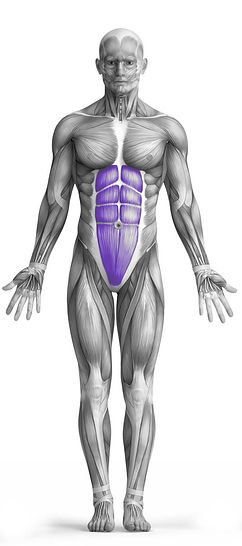Plank to Hip Raise 101 Video Tutorial
0

Exercise Synopsis
Target Muscle Group
Abs
Secondary Targets
None
Execution
Compound
Force Type
Isometric
Required Equipment
Bodyweight
Fitness Level
Beginner
Variations
None
Alternatives
None
Timer
Hour
Minute
Second
Stopwatch
00:00:00:00
Overview
The "Plank to Hip Raise" is a bodyweight exercise designed to target the abdominal muscles, providing a core-strengthening challenge with no additional equipment required. Starting in a forearm plank position, the movement involves lifting the hips upward toward the ceiling in a controlled motion, creating an inverted "V" shape, and then returning to the plank position. This dynamic exercise enhances core stability, engages the lower and upper abdominal muscles, and promotes proper posture. With no secondary muscle group involvement, it focuses solely on strengthening and sculpting the abs while improving overall core endurance.
How to Perform
Begin in a kneeling position with your forearms placed on the floor, slightly in front of your head.
Straighten both legs behind you, ensuring they are spaced hip-width apart.
Press your forearms firmly into the ground as you lift your hips toward the ceiling, forming an inverted "V" shape with your body.
Slowly lower your hips back to the plank position, keeping control throughout the movement.
Repeat the movement for the desired number of repetitions, focusing on engaging your core muscles during each lift and lowering phase.
★ Bonus: For exercises that involve external weights (such as dumbbells, barbells, or machines), the One Rep Max (1RM) calculator can help you estimate your maximum lifting capacity. Use it to track your strength progress and adjust your training for optimal results.
Tips
Perform the exercise slowly and deliberately, prioritizing control over the number of repetitions completed.
If you find it difficult to lift your hips and arms correctly, assess your thoracic extension. Consider incorporating soft tissue techniques to improve this area for better mobility and positioning.
Actively press your forearms into the ground to activate your serratus anterior, ensuring your upper back stays engaged. Your shoulder blades should not create a dip in the middle.
Avoid holding your breath during the movement. Stability should come from maintaining proper posture, not from compensating with your breathing.
Focus on mastering the movement pattern while maintaining stability throughout, ensuring your breath does not become a crutch for lack of control.
How Not to Perform
Avoid Arching Your Lower Back
Don’t let your lower back sag when you lift your hips. This can strain your spine and take focus away from your core. Engage your abs to maintain a neutral spine and avoid unnecessary pressure on your lower back.
Do Not Rush the Movement
Speeding through the exercise can lead to poor form and wasted energy. Move slowly and with control, focusing on engaging your core muscles during both the upward and downward phases.
Don’t Hold Your Breath
Holding your breath can cause tension in your body and reduce your ability to stabilize. Breathe steadily throughout the movement to maintain control and support your core.
Avoid Flaring Your Elbows
Do not let your elbows move too wide or flare out to the sides. Keep your elbows directly under your shoulders to maintain stability and ensure proper engagement of your upper body muscles.
Don’t Let Your Head Drop or Look Forward
Keep your head in a neutral position aligned with your spine. Looking up or dropping your head can cause strain on your neck and distract from focusing on the core.
Avoid Using Momentum
Do not swing your hips up using momentum or jerking movements. The goal is to move with precision, engaging the core rather than relying on fast or uncontrolled motions.
Don’t Neglect Core Engagement
Ensure your core is engaged throughout the entire movement. Failing to do so will reduce the effectiveness of the exercise and increase the risk of injury. Focus on drawing your belly button in towards your spine as you lift and lower your hips.
Avoid Letting Your Hips Drop Too Low
Don’t let your hips sink below the starting plank position. This reduces the intensity of the core engagement and can put unnecessary strain on your lower back. Keep your hips in line with your body for optimal activation.
Don’t Forget to Maintain a Consistent Pace
Inconsistent pacing can cause uneven engagement of the muscles. Keep a steady, controlled rhythm to ensure both sides of your core are equally engaged throughout the exercise.
Variations
Variations of fitness exercises refer to different ways of performing a specific exercise or movement to target various muscle groups, intensities, or goals. These variations aim to challenge the body differently, prevent plateaus, and cater to individuals with varying fitness levels.
Alternatives
Alternative exercises in fitness refer to different movements or activities that target similar muscle groups or serve the same training purpose as the primary exercise. These alternative exercises can be used as substitutes when the original exercise is unavailable or challenging to perform due to various reasons such as equipment limitations, injuries, or personal preferences.








